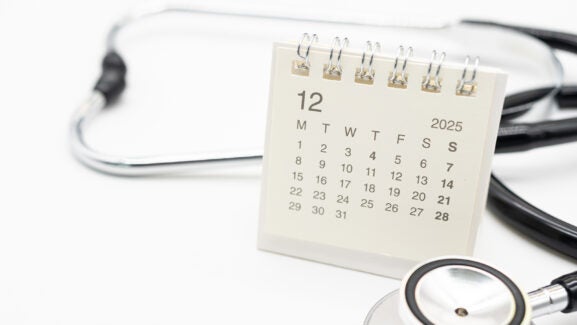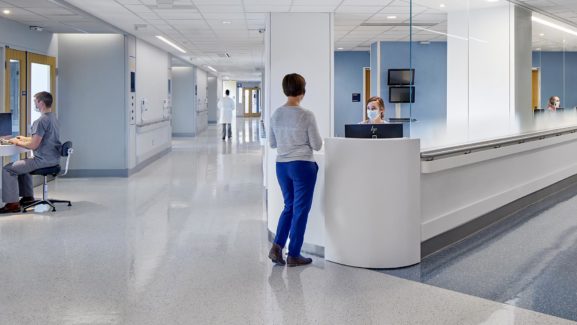

UVA Health Safety Officer Hunter Martin
Safety and Security: Emergency Eyewash Stations
Our hospital has 102 emergency eyewash stations. If you’re in an area in which you work with or around hazardous chemicals or materials, it’s important to know when and how to use one properly. Even better: Protect your eyes, so you won’t have to.
“Eyewash stations are important for team member safety. To ensure that, in any environment where your eyesight may be threatened, you have the appropriate eyewash available. What eyewash stations are not is a substitute for proper eye protection,” says UVA Health Safety Officer Hunter Martin. “Goggles are available from Employee Health for those who need them.”
Act Fast When Exposure Happens
If the eyes are exposed to hazardous substances like formaldehyde or methylene chloride, serious injury can occur — even blindness. The faster you can flush the substance from the eye, the lower the risk for permanent damage. That’s why there are strict standards for where eyewash stations are located.
“The American National Standards Institute has established that eyewash stations need to be within 55 feet of a hazard to meet the OSHA [Occupational Safety and Health Administration] standard for a ‘readily accessible’ eyewash station. They determined that 55 feet equals about 10 seconds of travel time,” says Martin.
Those 10 seconds can make all the difference, so be aware of where your closest eyewash station is located. And know how to use it correctly.
“These are designed to be used by a person with limited sight, so they’re not complicated. But there are multiple types of eyewash stations out there,” says Martin. “Just because you’ve used a station at one location doesn’t mean you’ll be able to easily work another. Familiarize yourself with the one closest to you; refer to the manufacturer’s instructions as needed.”
You can find detailed instructions in the SDS Library on the appropriate way to utilize the eyewash stations after exposure. Here are some basic steps to follow once you’ve activated the flow of water:
- Hold open your eyes and place them in the flow of water.
- Don’t rush the flush — keep your eyes in the water for 15 minutes.
- Roll your eyes in all directions to rinse all surfaces.
- Avoid rubbing your eyes.
- Notify your supervisor and ensure the incident is recorded as a Be Safe event.
How We Maintain Eyewash Stations
When you need an eyewash station, you can rest assured that one will be accessible, functional, and clean. There are weekly checks performed by individual departments to make sure the water is flowing, and that it’s the right temperature (between 60 and 100 degrees Fahrenheit).
“The goal is to keep the water fresh. You don’t want it to sit because it can corrode the metals and sediment or bacteria can build up. Then you’ll be spraying bad water in your eyes, making the problem worse,” says Martin.
Twice a year, our Health System Physical Plant (HSPP) team also performs a more in-depth assessment of each eyewash station, completing any necessary repairs or updates. “We’re never at risk for being out of compliance with OSHA requirements thanks to HSPP,” says Martin.
The HSPP team is also responsible for installing new eyewash stations, which is not always an easy task. “Installation can be pretty labor-intensive depending on the area. And there is the lifelong service and maintenance requirement to consider,” says Martin. “If we have a station that’s not serviced or checked, then we get dinged by the Joint Commission. So we have to assess the need carefully.”
If you think an eyewash station is needed in your area, contact Martin for more information.
Interested in joining the Safety and Security Subcommittee? Email Rebecca Hill for details.
Latest News



